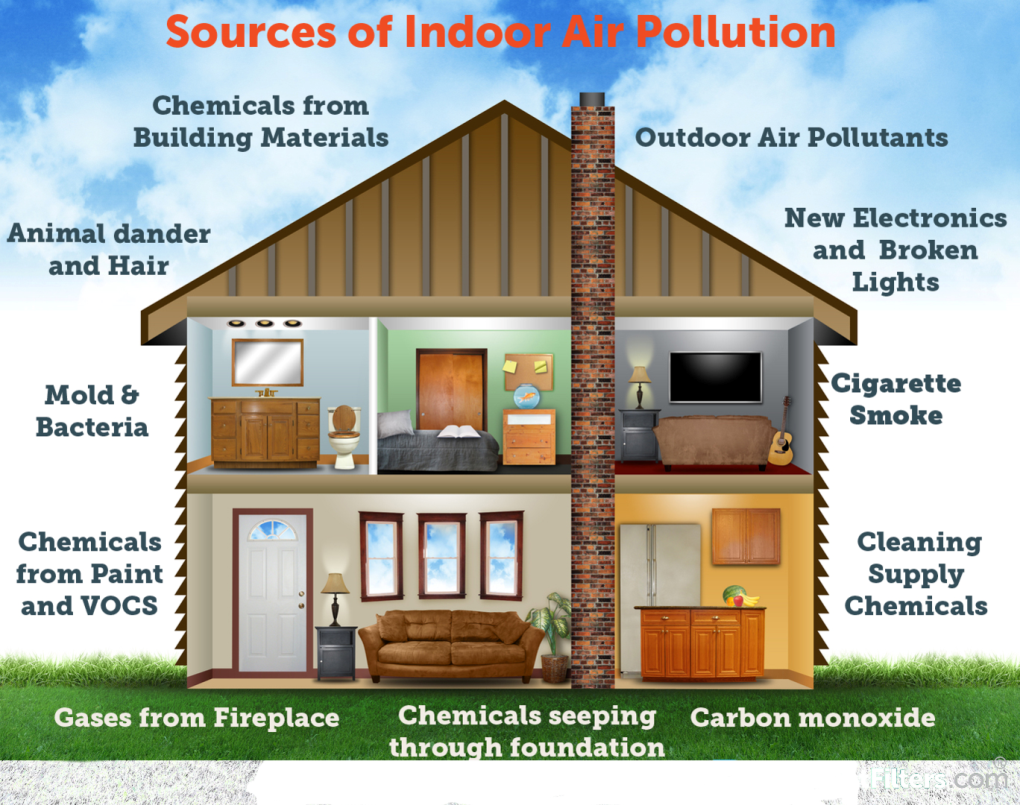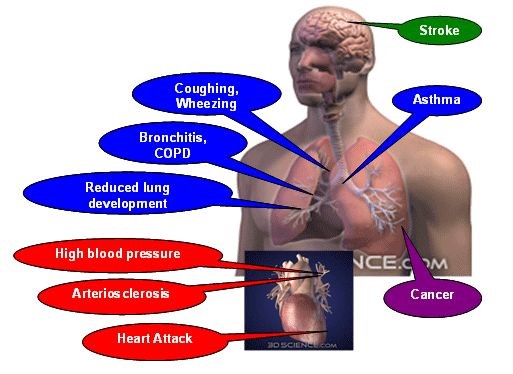Health Hazard Caused By Indoor Air Pollution
Have you ever thought about why you have a persistent problem with cold or why your kids are falling sick more frequently than ever? Seeking the help of a doctor is not enough in such a scenario. Indoor air quality causes serious harm to your health and well-being. The indoor air quality is more hazardous to our health than the air outside. This is especially true during the winter when windows and doors are kept tightly shut. While you take every possible precaution to stay safe from outdoor pollution, there is hardly any importance given to indoor air quality. So, in this blog, we discuss in detail the sources, health effects, and the possible solution to stay safe from indoor air pollution.
Why is Indoor Air Pollution a Serious Concern?
Pollutants that release harmful gases or particles into the air are the main cause of deteriorating indoor air quality. Several studies have suggested that the air within homes and commercial buildings is more polluted than the outdoor air, especially in the largest industrialized cities. Indoor air pollution is a serious concern because a lot of people are still not aware of the consequences of poor indoor air.
The lack of proper ventilation leads to the accumulation of pollutant levels that can pose health problems. The present situation leads to a condition known as sick building syndrome (SBS), which is a medical condition where people feel unwell or suffer from illness for no apparent reason. The severity of the symptoms increases with the number of time people spend in the buildings.
Major Sources of Indoor Air Pollution

Every household and office building is a potential source of excessive amounts of one or another toxic pollutant. In addition, chemicals in hairsprays, deodorants, oven cleaners, paints, pesticides, laundry aids, floor and furniture polishes, glue, and, ironically, air fresheners also lead to indoor air pollution. Your kitchen range, fireplace, heater, rugs, walls, furniture, clothing, and even the sheets you sleep on, can be significant sources of indoor air pollutants. Some of the most common sources of indoor air pollution are:
- Nitrogen dioxide -This indoor air pollutant causes irritation in the throat, eyes, nose, and respiratory tract.
- Carbon monoxide -The odorless gas is produced by the incomplete combustion process of fossil fuels. Carbon monoxide causes tiredness, headaches, dizziness, nausea, and increased heart rate.
- Formaldehyde -A colorless and strong-smelling chemical, formaldehyde is present in your sofas and other household products. Exposure to formaldehyde causes watery eyes, irritation in the eyes, nose, and throat, coughing, wheezing, and skin irritation.
- Radon -This gas is found almost everywhere at low levels. Exposure to radon increases the risk of lung cancer.
- Asbestos -This hazardous air pollutant can easily enter your lungs and lead to cancer, coughing, breathing problems, and at times permanent lung damage.
How does indoor air pollution affect health?
According to the World Health Organization, indoor air pollution greatly increases the risk of both chronic obstructive pulmonary disease and acute respiratory infections in children. In developing nations, acute respiratory infection is the primary cause of death among children aged five or under. Health effects from indoor air pollutants may be experienced soon after exposure or, possibly, years later.

Short-Term Health Effects
Temporary or short-term effects of indoor air pollution may lead to a number of health problems such as pneumonia and bronchitis. The health effects may show up after a single exposure or repeated exposure. Some of the other consequences of short-term exposure to indoor air pollution are:
- Irritation of the eyes,
- Irritation of the nose
- Throat irritation
- Headaches
- Dizziness
- Fatigue
Such immediate effects are usually short-term and treatable. Sometimes the treatment is simply eliminating the person’s exposure to the source of pollution.
Symptoms of some diseases such as asthma, hypersensitivity pneumonitis, and humidifier fever, may also show up soon after exposure to some indoor air pollutants. The likelihood of immediate reactions to indoor air pollutants depends on several factors such as age and pre-existing medical conditions. In other cases, whether a person reacts to a pollutant depends on individual sensitivity, which varies tremendously from person to person.
Long-Term Health Effects
Some of the long-term effects may last for years to a lifetime and may even lead to death. Other health effects may show up either a year after exposure has occurred or only after long and repeated periods of exposure. Long-term exposure to air pollution can have the following effects:
- Respiratory diseases
- Heart disease
- Cancer
- Aggravated cardiovascular and respiratory illness
- Stress to the heart and lungs
- Decreased lung function
- Shortened life span
It is important to try to improve the indoor air quality at your home even if symptoms are not noticeable. While pollutants commonly found in indoor air are responsible for many harmful effects, there is considerable uncertainty about what concentrations or periods of exposure are necessary to produce specific health problems. People also react very differently to exposure to indoor air pollutants.
You May Also like Reading: How to Buy Air Purifiers? Complete Buying Guide
The Possible Solution
The only way to deal with indoor air pollution is to know the sources of indoor air pollution and take the right steps to deal with the problem. Installing a HEPA air purifier can be of great help in reducing harmful pollutants and cleaning the indoor air. The filter catches and traps 99.9% of pollutants to make the indoor air completely safe. In addition, taking some additional steps such as not smoking, and avoiding products that have VOCs, and formaldehyde can go a long way in improving the indoor air quality. You can use the KENT Alps Plus Air Purifier which comes with a real-time air quality monitor that displays the level of PM2.5 present in the indoor air.
To know more about indoor air pollution read our inside story.





